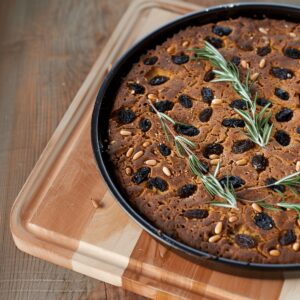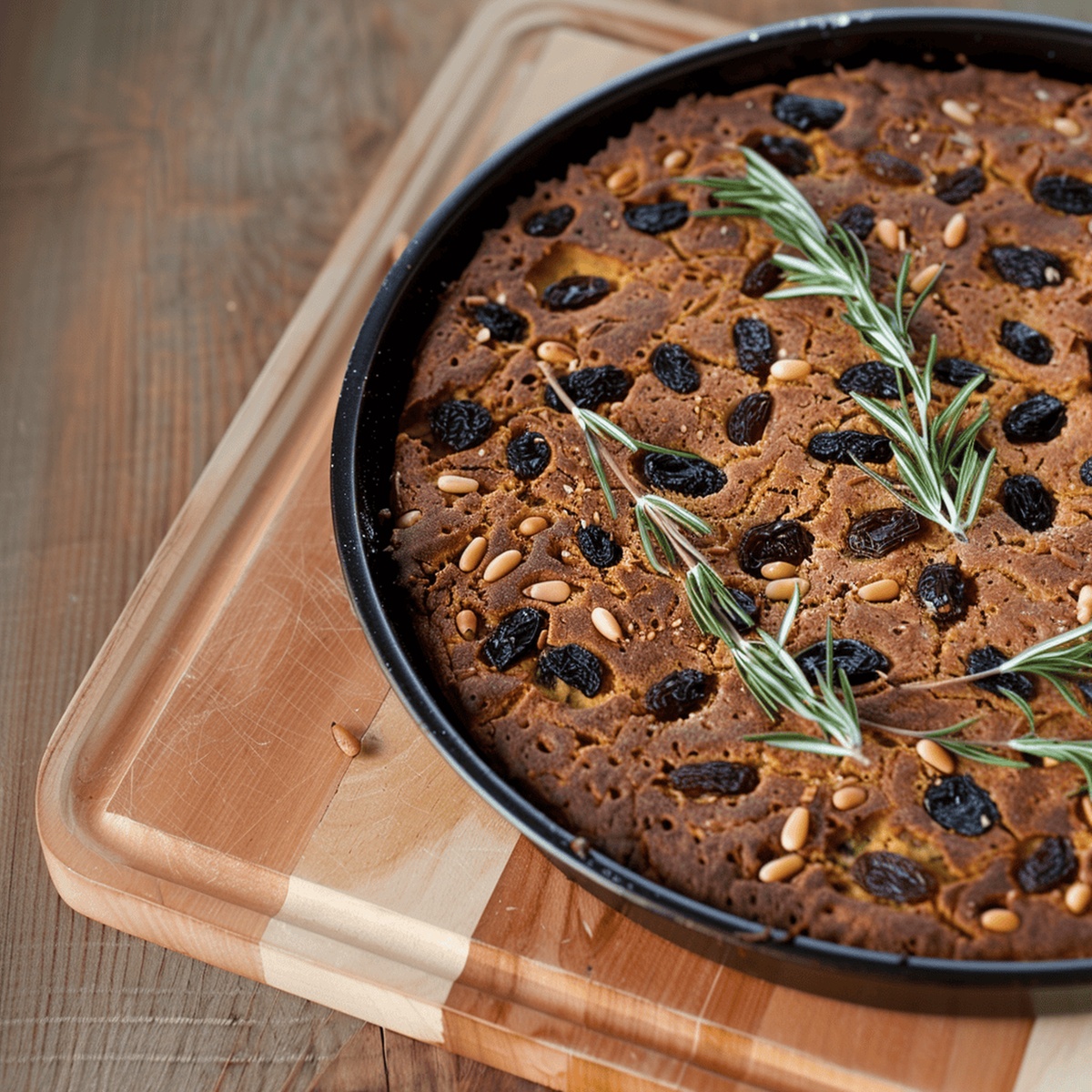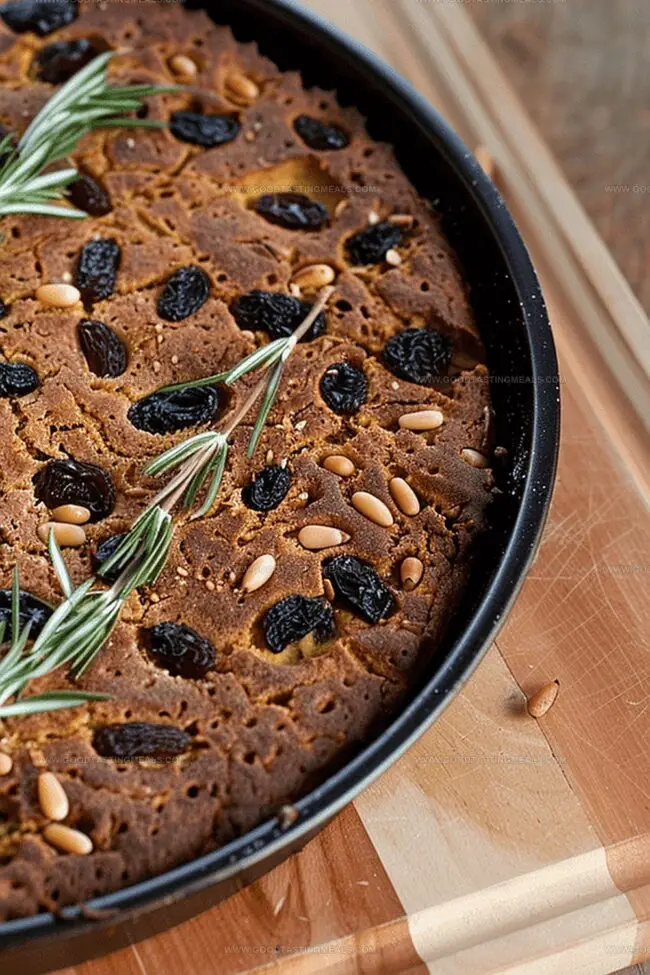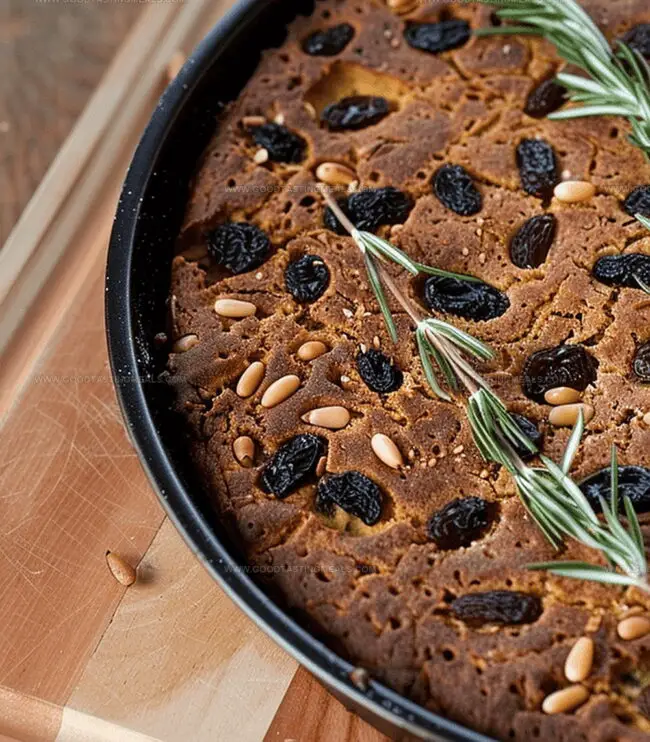Try This Rustic Tuscan Castagnaccio Recipe for Sweet Comfort
Rustic castagnaccio represents a traditional Tuscan delicacy that whispers stories of ancient culinary heritage and woodland traditions.
Chestnuts reinvent into a remarkable dessert with minimal ingredients and profound depth of flavor.
Dense and earthy, this cake captures the essence of mountain landscapes and seasonal cooking practices.
Nutty aromas waft through kitchens, signaling a connection to generations of Italian home bakers who treasured simple, hearty recipes.
Its unique texture combines rustic charm with unexpected sophistication, challenging perceptions of what a dessert can represent.
The recipe requires patience and respect for ingredients, reflecting a culinary approach that values technique over complexity.
Passionate cooks appreciate how castagnaccio bridges cultural memories with contemporary gastronomic experiences.
Why Castagnaccio is a Taste of Rustic Italian Tradition
Ingredients That Make Castagnaccio So Distinctive
Flour and Liquid Base:Toppings and Aromatics:Cooking Medium:How to Bake a Moist and Nutty Castagnaccio
Step 1: Prepare Oven
Preheat the oven to 400°F (200°C) to ensure it’s ready for baking.
Step 2: Create Batter
Mix the ingredients for the batter:Blend until smooth, aiming for a consistency similar to pancake batter.
Step 3: Heat Olive Oil
Place olive oil in a round pizza pan and heat in the oven for 5 minutes.
Step 4: Pour Batter
Carefully remove the hot pan from the oven and pour the batter into the center.
Allow the batter to spread naturally to the edges of the pan.
Step 5: Add Toppings
Sprinkle the following ingredients evenly over the batter:Step 6: Bake Castagnaccio
Bake in the preheated oven for 20 minutes.
Look for a golden top and the edges pulling away from the pan sides.
Step 7: Serve and Enjoy
Remove from the oven and let cool slightly before serving.
Slice and savor this traditional Italian chestnut cake.
Top Tips for Making Castagnaccio at Home
How to Store and Serve Castagnaccio the Right Way
Best Flavors to Enjoy Alongside Castagnaccio
Castagnaccio Variations You’ll Want to Try
Print
Castagnaccio Recipe
- Total Time: 30 minutes
- Yield: 4 1x
Description
Castagnaccio, a rustic Tuscan chestnut cake, embodies traditional Italian countryside simplicity with its earthy charm. Nutty chestnut flour, fragrant rosemary, and pine nuts create a harmonious dessert perfect for savoring regional Italian culinary heritage.
Ingredients
Main Ingredients:
- 14 ounces (400 g) chestnut flour
- 2 cups (½ L) water
Dry and Flavor Ingredients:
- 2 tablespoons (30 ml) sugar
- 1 pinch salt
- ½ cup (110 ml) raisins
- ½ cup (110 ml) pine nuts
- 2 sprigs fresh rosemary
- Zest of 1 orange
Liquid Ingredients:
- 6 tablespoons (90 ml) extra-virgin olive oil
Instructions
- Thoroughly sift the chestnut flour in a large mixing bowl to eliminate any lumps and ensure a smooth texture.
- Combine the sifted chestnut flour with granulated sugar and a pinch of salt, whisking the dry ingredients until evenly distributed.
- Gradually pour room-temperature water into the dry mixture, stirring constantly with a whisk to create a silky, pancake-like batter without any clumps.
- Incorporate two-thirds of the finely grated orange zest into the batter, mixing until the zest is uniformly dispersed.
- Place a 12-inch (30 centimeters) round pizza pan in the oven, then carefully add olive oil and heat for 4-5 minutes until the oil is sizzling hot.
- Remove the hot pan from the oven, maintaining caution to prevent burns, and immediately pour the chestnut batter into the center, allowing it to naturally spread to the edges.
- Delicately scatter raw pine nuts, plump raisins, fresh rosemary leaves, and the remaining orange zest across the surface of the batter.
- Transfer the pan back to the preheated oven at 400°F (200°C) and bake for 18-22 minutes, watching for a golden-brown surface and slight pulling away from the pan’s edges.
- Remove from the oven and let the castagnaccio cool for 10 minutes before slicing and serving.
Notes
- Originating from Tuscany, this rustic chestnut flour cake offers a unique, dense texture with a delightful blend of sweet and savory flavors.
- Chestnut flour creates a naturally gluten-free base, making this traditional dessert perfect for those with wheat sensitivities.
- Heating the olive oil before adding the batter ensures a crispy, golden bottom that’s characteristic of authentic castagnaccio.
- Pine nuts and raisins provide contrasting textures and bursts of sweetness against the earthy chestnut flour backdrop.
- Fresh rosemary adds an unexpected herbal note that elevates the cake’s complex flavor profile.
- Serve slightly warm or at room temperature as a distinctive dessert or afternoon snack that captures the essence of Italian countryside cooking.
- Prep Time: 10 minutes
- Cook Time: 20 minutes
- Category: Desserts, Snacks
- Method: Baking
- Cuisine: Italian
Nutrition
- Serving Size: 4
- Calories: 435 kcal
- Sugar: 8 g
- Sodium: 50 mg
- Fat: 32 g
- Saturated Fat: 4 g
- Unsaturated Fat: 28 g
- Trans Fat: 0 g
- Carbohydrates: 35 g
- Fiber: 5 g
- Protein: 6 g
- Cholesterol: 0 mg




Liam O’Brien
Founder & Recipe Developer
Expertise
Education
Dublin Institute of Technology (now Technological University Dublin)
Ballymaloe Cookery School, County Cork, Ireland
Liam O’Brien is the co-founder and kitchen soul behind Good Tasting Meals, a chef who believes that cooking shouldn’t feel stressful or complicated.
He earned his culinary stripes at Technological University Dublin and polished his farm-to-table skills at Ballymaloe Cookery School. With over 15 years flipping pans and stirring up stories, Liam has worked in family cafés, bustling bistros, and everything in between.
At Good Tasting Meals, Liam brings you recipes that feel like home: cozy, simple, and full of flavor.